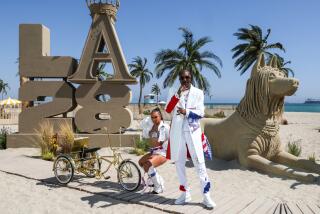History : SEAL BEACH : Home to Casinos During Prohibition
- Share via
City boosters brought a roller coaster from the 1915 San Francisco World Expo to Seal Beach in hopes of attracting visitors to the pier and beach area. A “cyclone” ride also graced the beach, said Seal Beach historian Barbara Rountree.
Despite Prohibition, saloons and bars soon dotted Main Street. Gambling was also popular at two locations; one of the casinos was in the current Seal Beach Inn on Central Avenue, Rountree said.
The attractions combined to make the city a popular tourist destination. And thanks to the Red Car trains, which ran through the center of Seal Beach between Los Angeles and Huntington Beach, folks from up and down the coast could get to the pier within a few hours.
“It was the place just across the county line,” said Gordon Shanks, a longtime resident and history buff. “They would have never brought in the roller coaster if they didn’t have the Red Car.”
Among the city’s best-known landmarks of the era was the bathhouse on Ocean Avenue at Main Street. It included a second-story dance floor built on springs so it moved as people danced, Rountree said.
“It was magnificent,” she said. “And very legitimate.”
Rountree said that, as lively as Seal Beach was, the city remained free of the deep-seated corruption, violence and lawlessness that gripped other cities during Prohibition.
“It was not like Chicago,” she said. The gamblers and other merchants of the day “were basically law-abiding citizens” who “were very nice and supportive of the community.”
Seal Beach’s fortune turned with the Great Depression. The number of tourists dropped considerably, and many businesses were forced to close. “Nobody had any money,” Rountree said. “It was difficult for anyone to have leisure time.”
During and after World War II, a new generation of residents moved to Seal Beach. Many were decidedly more conservative than the “Coney Island” crowd, and many came to the city to raise families, Rountree said. Slowly, the Seal Beach culture changed.
By the late 1940s, nearly all the gambling and bathing establishments were gone. The Red Car stopped running in the late 1950s, and the tracks were removed in the 1960s. The amusement park rides and bathhouse became dilapidated and were eventually removed.
Many historical photos and items of Seal Beach’s casino era are on display at the Red Car museum, on Central Avenue near the library. The museum is open to the public two Saturdays a month in the afternoon.
More to Read
Sign up for Essential California
The most important California stories and recommendations in your inbox every morning.
You may occasionally receive promotional content from the Los Angeles Times.














